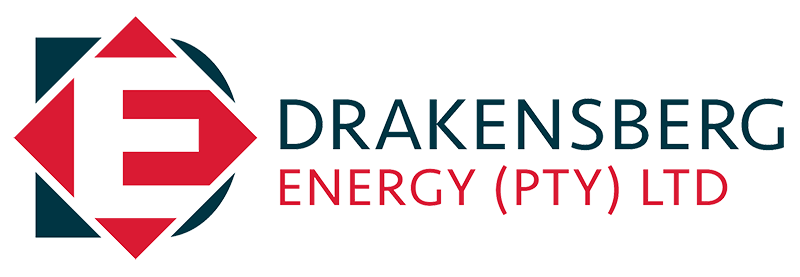News
We pride ourselves on our commitment to customer satisfaction and building long-term partnerships.
ULSD Market Insight | July 1–4, 2025
Diesel steadies while oil markets eye OPEC+ and macro headwinds
As the second half of 2025 kicks off, the ultra-low sulphur diesel (ULSD) market finds itself in a cautious holding pattern.
OPEC+ meets on July 6. There’s growing consensus that production will rise again—potentially another 400,000+ barrels/day in August. Markets have priced some of this in, but there’s still risk
if member compliance falters or global demand shows softness.
U.S. inventory levels are once again in focus. The American Petroleum Institute hinted at a surprise crude build last week. That’s not typical for summer—and it may weigh on refined product sentiment if confirmed by the EIA this week.
A softer dollar would normally support oil demand—but confidence remains fragile.
In short, July started with more questions than answers. The diesel market is calm on the surface, but undercurrents—from OPEC policy to U.S. jobs data—are making refiners, traders, and importers
rethink their positions for Q3.
#DieselMarkets
#ULSD
#FuelTrading
#DrakensbergEnergy
#OPECWatch
#DieselDemand
#OilAndGas
#EnergyLogistics
#MacroEnergyOutlook
#Distillates
... See MoreSee Less
Last weeks ULSD Market Snapshot:
Strongest surge since February
ULSD futures jumped roughly 8% on June 13, marking the steepest single-day gain since February. Escalating tensions between Israel and Iran, which raised fears of disruptions in Middle East crude exports—particularly sour grades crucial for diesel/distillate production
Tight U.S. inventory intensifies rally
U.S. ULSD stocks are running at about 108.9 million barrels, nearly 15% below the five-year average. This tight supply, combined with rising crude prices, is expected to push retail diesel prices higher by 10–30¢/gal over the next two weeks.
Regional price trends
Gulf Coast Spot: Averaging $2.085/gal (June 9), up ~1% from the previous day and ~–8.7% year‑on‑year.
Retail in the U.S.: Around $3.471/gal (June 9), slightly up from $3.451 the prior week .
West Coast (LA): Spot prices at $2.189/gal, down from $2.433 a year ago.
What’s fueling the sharp changes?
Geopolitical risk: Middle East conflict roils crude flows through the Strait of Hormuz—diesel chemistry hit hardest
Low inventories: U.S. ULSD stocks remain historically low, tightening the balance sheet
Crude oil gains: Diesel futures are following oil higher amid broader supply concerns
What to expect next
Continued volatility—supply fears could persist if Middle East tensions escalate.
#ULSD #DieselMarket #EnergyInsights #FuelTrends #OilPrices #SupplyChain #LinkedInBoost #MarketUpdate #DrakensbergEnergy
... See MoreSee Less
Weekly OPEC & OPEC+ Market Round-Up — Drakensberg Energy
1. OPEC+ Production Increases
At their virtual meeting on May 31, OPEC+ decided to increase output by 411,000 barrels per day (bpd) for July—the fourth consecutive monthly hike—despite internal resistance from some members including Russia. Analysts note that while this boost surpasses estimated global demand growth for 2025, actual output may remain constrained by ongoing overproduction from countries like the UAE and Iraq.
2. Pricing Movements & Benchmarks
Despite rising supply, Brent crude rose to ~$65.34/bbl, about 8.5% above its year-to-date lows, supported by solid refinery margins and low inventories. Saudi Arabia’s official selling price (OSP) for Arab Light crude in Asia was cut by ~$0.20, reflecting abundant regional supplies and domestic summer fuel demand.
3. Geopolitical Risk Premium & Diverging Supply Factors
Oil markets also gained from geopolitical factors. Tensions in Ukraine and Iran, combined with U.S. sanctions on Russian energy imports and potential Iranian output curbs, reinforced bullish sentiment. Meanwhile, supply disruptions like Canadian wildfires briefly offered support—but those gains were muted by the OPEC+ decision to further boost output.
4. Market Structure & Outlook
The futures curve remains in backwardation, suggesting strong near-term demand as inventories stay tight. However, HSBC warns that without further OPEC+ action, the constructive $65 target may be under threat as additional supply comes online in late 2025.
#DrakensbergEnergy #OPECPlus #OilMarketUpdate #EnergyTrading #BrentCrude #Commodities #marketoutlook
... See MoreSee Less
ULSD Market Snapshot – June 5, 2025
Northwest Europe (NWE)
• CIF Price: $721.96/MT
• FOB Price: $7.05/MT
• Market Note: Platts has discontinued its ULSD 10 ppm CIF NWE (all origin) assessment as of January 2, 2025, due to changes in trade flows post-EU sanctions on Russian oil products.
Mediterranean
• CIF Price: $766.39/MT
• FOB Price: $7.90/MT
• Market Note: The Mediterranean Sea has become an Emission Control Area (ECA) as of May 1, 2025, mandating marine fuels with sulfur content capped at 0.1%. This change is expected to increase demand for 0.1% sulfur marine gasoil (MGO) in the region.
United Arab Emirates (UAE)
• CIF Price: $586/MT
• FOB Price: $586/MT
• Market Note: The UAE’s non-oil private sector growth slowed in May, with the PMI falling to 53.3, the lowest since September 2021, suggesting moderated demand in the near term.
Singapore
• CIF Price: $868/MT
• FOB Price: $80.64/barrel
• Market Note: Singapore’s diesel market remains robust, with ULSD prices reflecting steady demand in the region.
⸻
At Drakensberg Energy, we remain committed to providing our clients with timely insights and strategic guidance to navigate the evolving energy landscape.
#ULSD #DieselMarket #EnergyUpdate #DrakensbergEnergy #OilAndGas #MarketInsights #GlobalEnergy #FuelPrices #EnergyNews #southafricaenergy
... See MoreSee Less
On behalf of all of us at Drakensberg Energy, we extend our heartfelt wishes to you and your families as you celebrate Eid al-Adha.
May this sacred occasion bring peace, prosperity, and renewed faith into your hearts and homes. As you gather with loved ones, we hope the spirit of sacrifice, generosity, and unity fills your days with joy and purpose.
... See MoreSee Less
Spotting Fraudulent Diesel Sellers in Vessel Trading:
Wholesale diesel trading faces circa. $5B+ in annual fraud losses. Protect your business by recognizing these red flags and implementing rigorous due diligence:
Critical Warning Signs
- “FOB Jurong” Offers: Unsolicited EN590 diesel deals “FOB Jurong” (Singapore) are high-risk—Jurong is a receiving port, not an export hub. Both Rotterdam and Houston are renowned for “Mandates” and “Brokers” to use as hubs to commit Fraud either by way of product or storage access
- Upfront Fees: Demands for deposits (e.g., “tank access” or “dip tests”) *before* product verification signal scams.
- Too-Good-To-Be-True Pricing: Market rates far below benchmarks (e.g., $350–400/MT for EN590) are bait.
- Pressure Tactics: Urgent deals or requests for secrecy (e.g., “keep confidential”) indicate manipulation.
- Documentation not normally used in Fuel Trades by Refiners: Irrevocable Purchase Orders, Letters of Intent, Soft Corporate Offer, Full Corporate Offer
Document Verification Essentials
Fraudsters often use forged paperwork. Always demand:
- Proof of Product (POP): Valid tank receipts (TSR), third-party inspection reports (e.g., SGS), and vessel documents (Q88/Q92).
- Ownership Proof: Unconditional titles like Bills of Lading.
- Vessel History: IMO numbers, port records, and Charter Party Agreements (CPA) for FOB claims. #MaritimeIndustry #FuelTrading #FraudPrevention #SupplyChainSecurity #DueDiligence #EnergySector #RiskManagement #WholesaleTrading #MaritimeSafety #drakensbergenergy #diesel #gasoil #ulsd
... See MoreSee Less
OPEC+ Nations Pledge Steady Oil Supply Amid Market Strength
In a virtual meeting on May 3, 2025, eight key OPEC+ members—Saudi Arabia, Russia, Iraq, UAE, Kuwait, Kazakhstan, Algeria, and Oman—reaffirmed their commitment to stabilizing global oil markets. With current conditions showing resilience, including low inventories, the group announced a cautious plan to boost production by 411,000 barrels per day in June 2025. This follows their December 2024 agreement to gradually reintroduce 2.2 million barrels per day of previously cut output starting April 2025.
The move aims to balance supply with rising demand while maintaining flexibility. Leaders emphasized that adjustments could be paused or reversed if market dynamics shift, ensuring they remain responsive to global energy needs. The decision reflects confidence in today’s stable fundamentals but also a cautious approach to avoid oversupply.
Additionally, the group vowed to address past overproduction, committing to full compliance with earlier agreements and compensating for excess output since January 2024. Monthly meetings will monitor progress, with the next session on June 1 to decide July’s production levels.
By prioritizing stability and transparency, OPEC+ seeks to reassure consumers and investors alike, fostering a predictable energy landscape amid economic uncertainties.
#OPEC #OilMarket #EnergyStability #GlobalEconomy #SaudiArabia #Russia #UAE #EnergySecurity #SustainableGrowth #MarketBalance #drakensbergenergy
... See MoreSee Less

